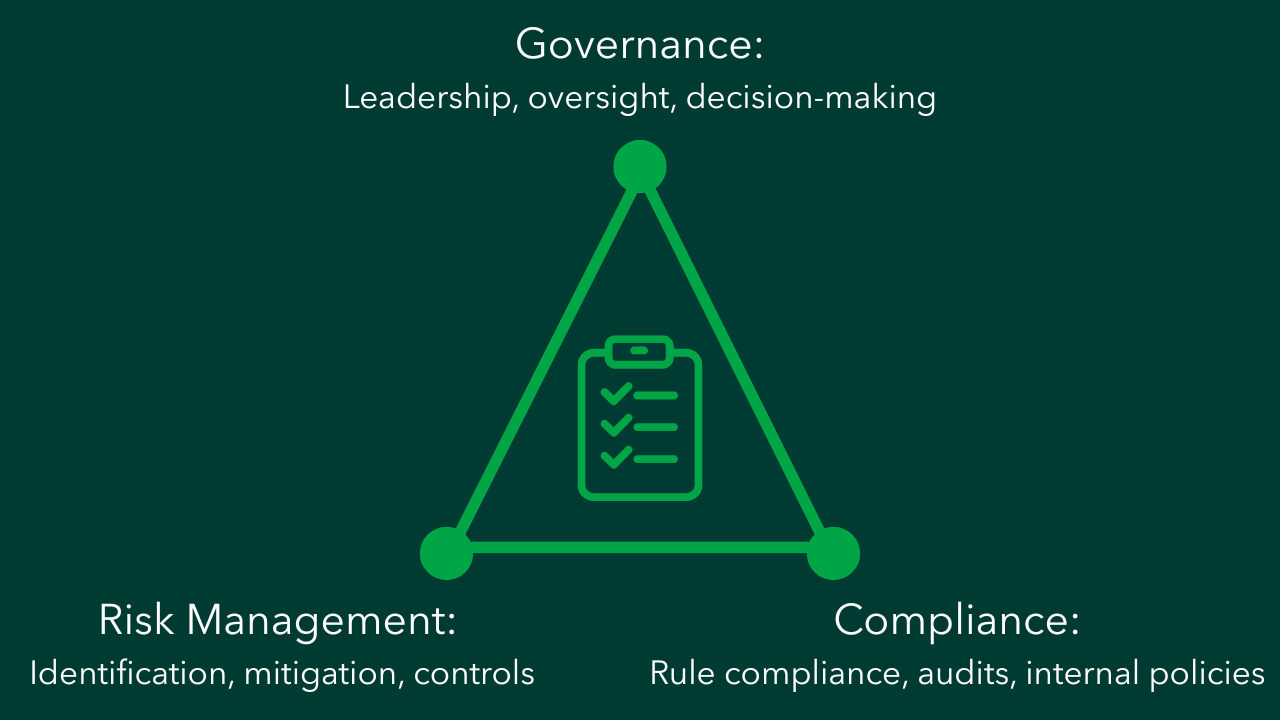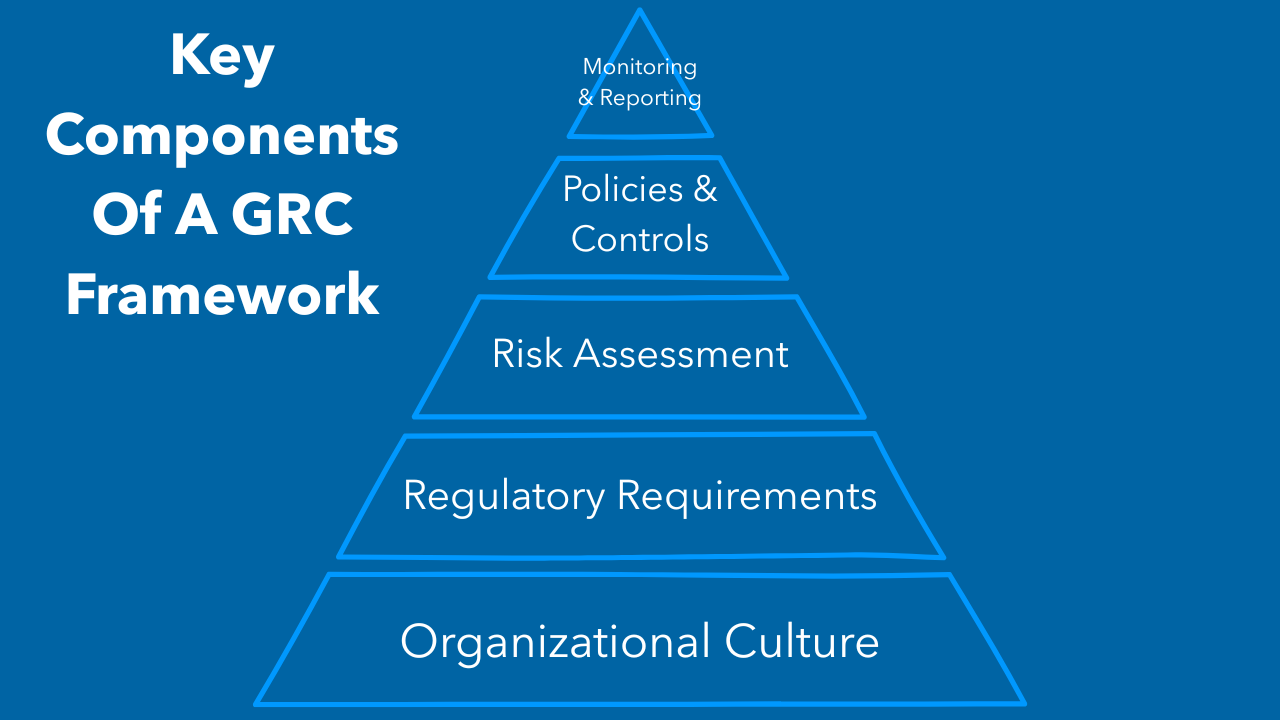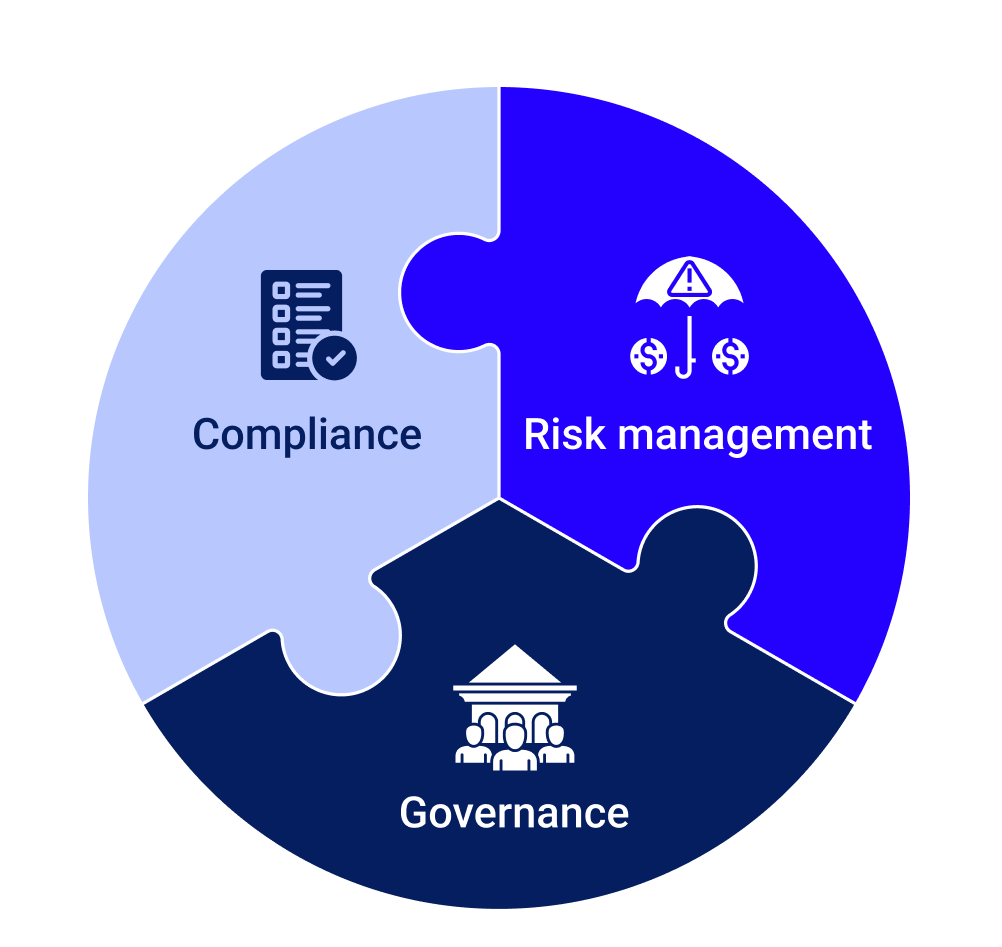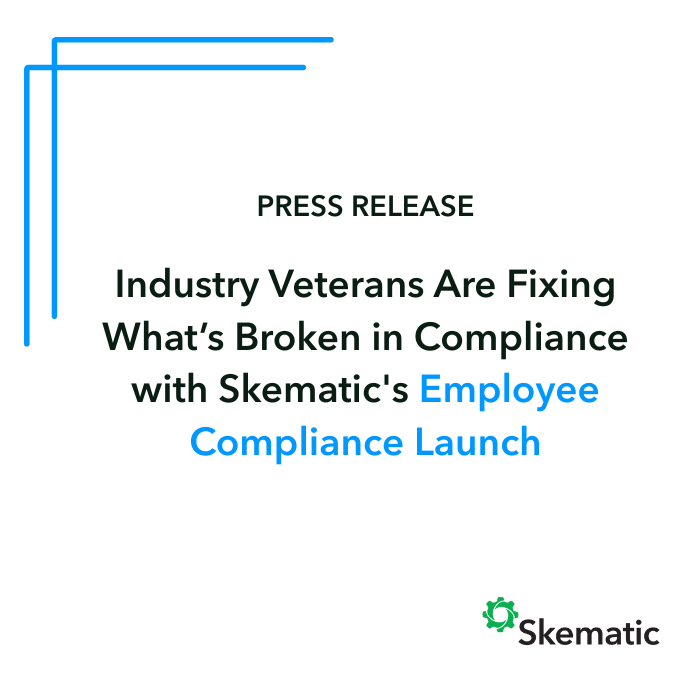In today’s complex regulatory and risk-filled environment, businesses need more than just good intentions, they need a clear strategy to navigate uncertainty, meet compliance requirements, and achieve strategic outcomes. That’s where GRC comes in.
GRC stands for Governance, Risk, and Compliance, a discipline that helps organizations align business objectives with ethical business practices, meet legal and regulatory requirements, and effectively manage risk. Whether you’re a startup or a global enterprise, a well-structured governance, risk, and compliance framework is essential to building trust, driving performance, and ensuring sustainable growth.
What Is Governance, Risk, and Compliance?
At its core, GRC is a structured approach to integrating three critical pillars of business oversight:
- Governance ensures that leadership decisions align with the organization’s strategic objectives and promote robust governance.
- Risk management focuses on identifying, evaluating, and mitigating risks—from security risks and operational failures to financial and legal risks.
- Compliance ensures the business is adhering to regulatory requirements, including industry standards, internal policies, and government laws.

By uniting these functions under a single strategy, organizations can reliably achieve objectives, improve efficiency, and avoid costly surprises.
Why GRC Matters
A well-executed governance, risk, and compliance program supports transparency, accountability, and resilience. With increasing compliance challenges, cyber threats, and growing pressure from industry and government regulations, businesses must be able to:
- Detect and respond to compliance risk
- Conduct thorough risk assessments
- Maintain strong internal controls
- Demonstrate adherence to regulatory compliance
- Align GRC activities with day-to-day business operations
Failing to do so can lead to significant consequences, from fines and penalties to reputational damage.
Key Components of a Strong GRC Strategy
To build an effective GRC program, organizations must integrate several essential components:
1. Governance, Risk, and Compliance Framework
A robust GRC framework provides the foundation for organizing responsibilities, processes, and technologies. It defines how risk is assessed, who is accountable, and how compliance is maintained across business units.
Popular frameworks include the governance, risk, and compliance Capability Model, which guides organizations through the stages of GRC maturity, from fragmented processes to fully integrated GRC approaches.
2. GRC Software and Tools
Modern organizations rely on GRC software to centralize and automate their GRC operations. These platforms help:
- Streamline compliance and reporting
- Enable resource management and control tracking
- Integrate with data governance and cybersecurity tools
- Improve visibility for key stakeholders and senior management
The best GRC tools also support task automation, risk mitigation workflows, and dashboards for real-time decision-making.
3. GRC Professionals
Roles like the Chief Compliance Officer and Chief Risk Officer lead GRC initiatives and ensure that the organization’s governance, risk, and compliance efforts are consistent and scalable. These leaders often collaborate with internal auditing teams to monitor effectiveness and ensure alignment with overarching governance, risk, and compliance strategy.

Implementing GRC: A Process, Not a Project
Implementing governance, risk, and compliance isn’t a one-time event, it’s an evolving journey. Successful GRC implementation requires:
- Clear alignment with organization’s strategic objectives
- Defined processes involved in risk management and compliance management
- Coordination across business units and key stakeholders
- Continuous evaluation to address uncertainty and improve controls
An effective GRC program evolves with the business, adapting to emerging threats, market changes, and evolving regulatory requirements.
GRC in Action: Real Business Impact
Imagine a global financial services firm managing operations across multiple jurisdictions. With the help of a GRC system, the company can:
- Perform enterprise risk management with clear ownership across departments
- Track adherence to GDPR, SOX, and other compliance requirements
- Equip executives with insights into risk management processes
- Detect gaps in policy adherence and enforce ethical business practices
The result is not only maintaining compliance but gaining a competitive advantage through transparency, trust, and operational excellence.
Final Thoughts
In an era of increasing complexity, uncertainty, and regulation, businesses can’t afford a siloed or reactive approach. A strong GRC strategy, backed by the right capabilities, helps organizations manage risk, enforce corporate governance, and meet global compliance requirements proactively. Skematic brings this to life with a modern, fully connected platform that centralizes compliance workflows, risk oversight, and program execution so teams can operate with clarity and control.
Whether you’re starting to explore GRC solutions or looking to optimize your current approach, investing in a unified, scalable, and integrated governance, risk, and compliance strategy isn’t just a good idea, it’s a business imperative.
With the right tools, people, and frameworks in place, your organization can move from risk-averse to risk-ready, transforming GRC efforts into a strategic asset that drives success.
See how our platform makes governance, risk, and compliance easierRequest a Demo



